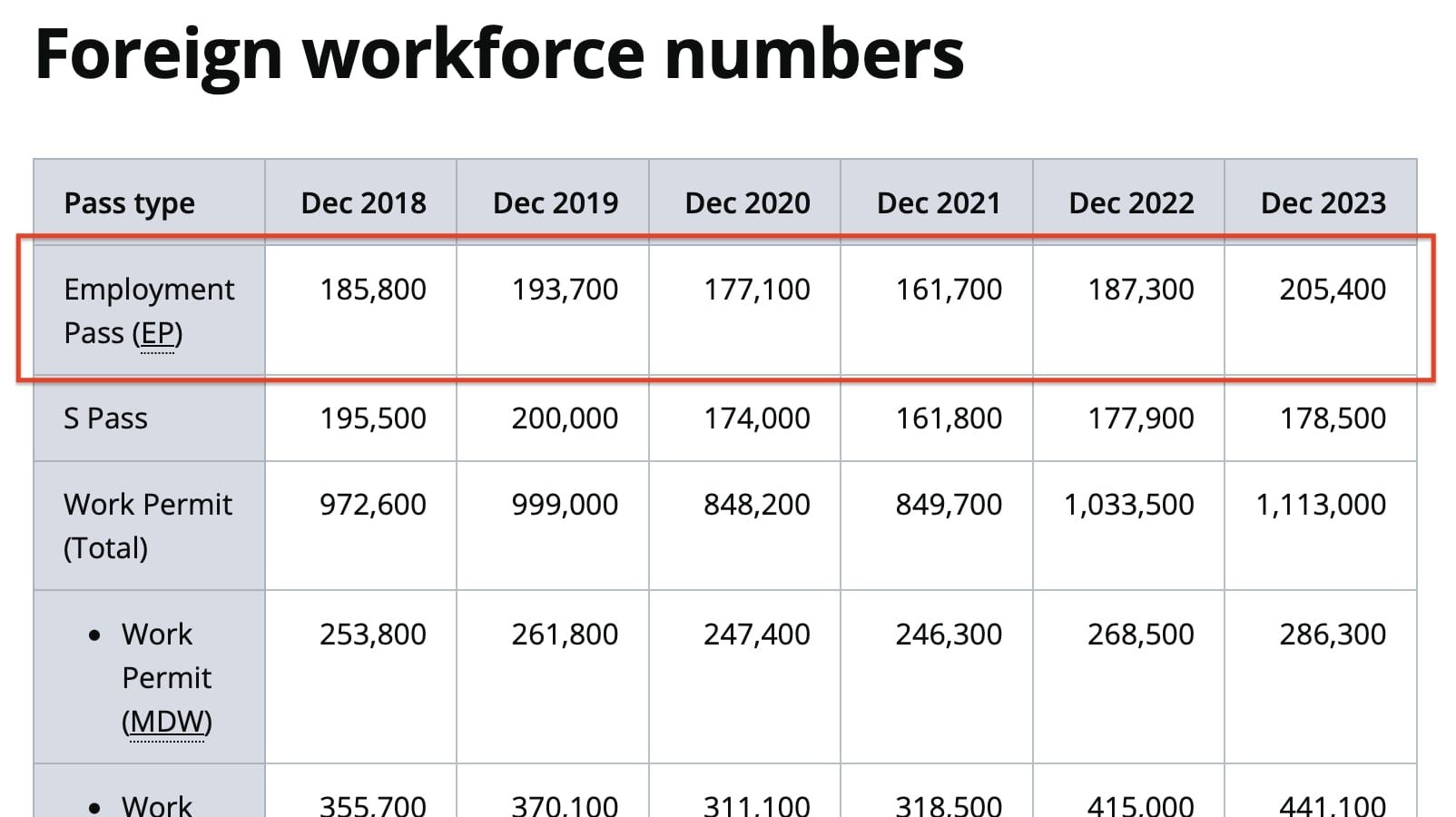SINGAPORE: In light of the latest Ministry of Manpower (MOM) statistics showing that the number of Employment Passes (EPs) is now higher than before the COVID-19 pandemic, a Singaporean on social media has questioned whether “jobs offered to EP holders are the ‘jobs Singaporeans don’t want’?”
MOM’s data reveals that the number of EPs was 205,400 in December 2023, reflecting about an 11% increase since December 2018 and around a 6% rise since December 2019.
According to MOM data, there were 185,800 EP holders in December 2018.
By December 2019, this number had increased to 193,700 before the pandemic struck. Although the numbers dipped during the pandemic, they rebounded to 187,300 in December 2022 and climbed to 205,400 by December 2023.

The comparison between December 2019 (pre-COVID) and December 2023 (post-COVID) clearly shows about a 6% increase in EPs, from 193,700 to 205,400, suggesting a recovery and an even stronger demand for foreign professionals in Singapore’s job market.
CNA reported that on April 2, Manpower Minister Tan See Leng said in Parliament that the growth in foreign employment in 2023 was in jobs that do not “typically” fall under the types Singaporeans want to do.
In 2023, Singapore’s employment grew by 88,400 jobs, with 83,500 of these positions going to non-residents.
Of the new non-resident jobs, 64,800 were in sectors like construction, which typically require work permits and other types of work passes.
This accounted for over 77% of the employment growth. Meanwhile, 18,700 new jobs were for EP and S Pass holders, who are high-skilled workers.
Dr Tan clarified that a significant proportion of work permit and other work pass holders was primarily in sectors like construction:
“The larger proportion of growth attributed to EP and S Pass holders last year did not affect (Professionals, Managers, Executives, and Technicians) PMET resident employment at all,” he added.
The MOM statistics suggest that while a large portion of non-resident job growth is in lower-skilled sectors, the increase in EP holders indicates a demand for higher-skilled foreign professionals.
These skilled positions prompted a Singaporean to question if these are really “jobs Singaporeans don’t want.” The rise in EP numbers post-COVID shows that businesses in Singapore still rely heavily on foreign expertise to fill specific roles.
However, Dr Tan also pointed out in his statement in Parliament that “The total number of EP and S Pass holders combined is still below pre-COVID levels.”

Based on MOM data, in December 2019, there were 193,700 EP holders and 200,000 S Pass holders, totalling 393,700. By December 2023, there were 205,400 EP holders and 178,500 S Pass holders, totalling 383,900.
This shows that while the number of EP holders has increased, the total combined number of EP and S Pass holders remains below pre-COVID levels, primarily due to decreased S Pass holders.
According to MOM’s Key facts on Employment Pass, EP candidates must meet a qualifying salary that matches the top one-third of local PMET salaries.
The starting salary is at least $5,000, which increases progressively with age, reaching up to $10,500 for those in their mid-40s. In the financial services sector, the required salary is even higher.

/TISG

